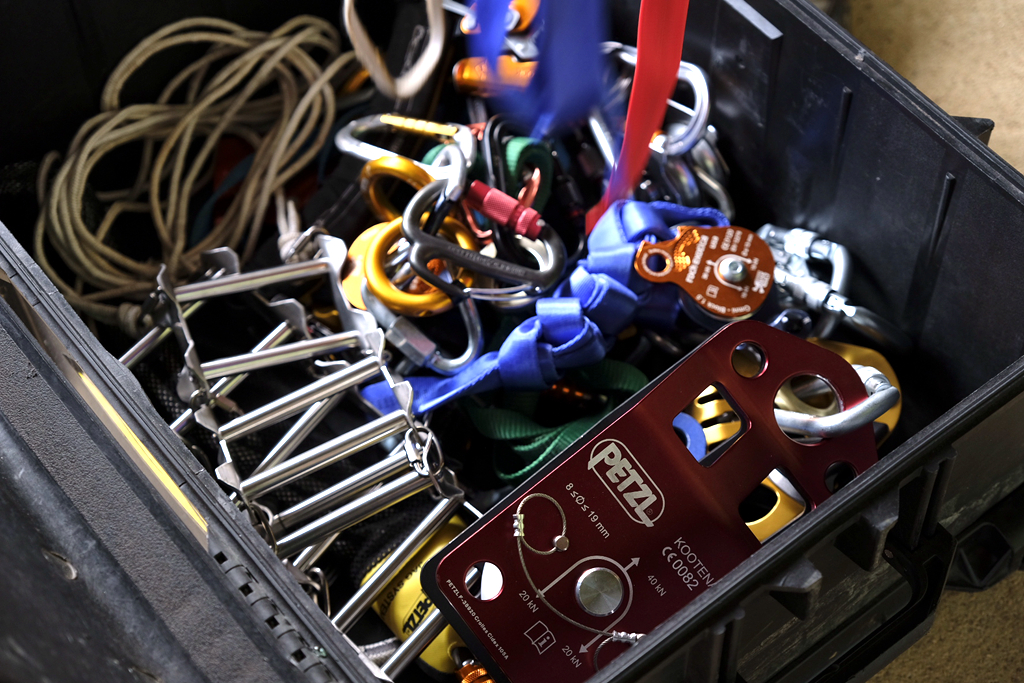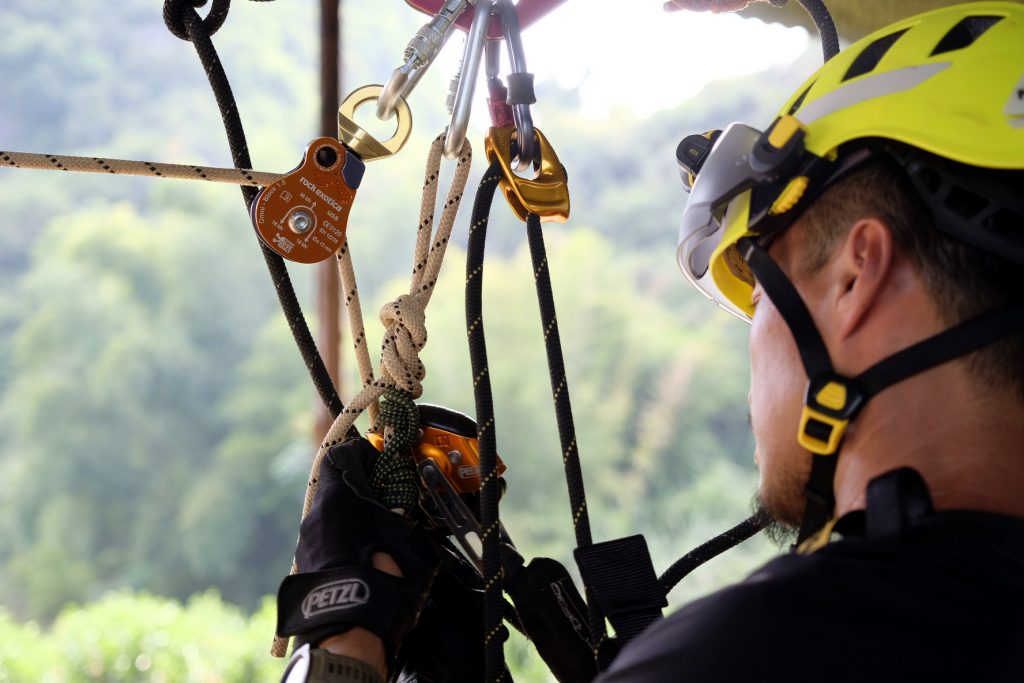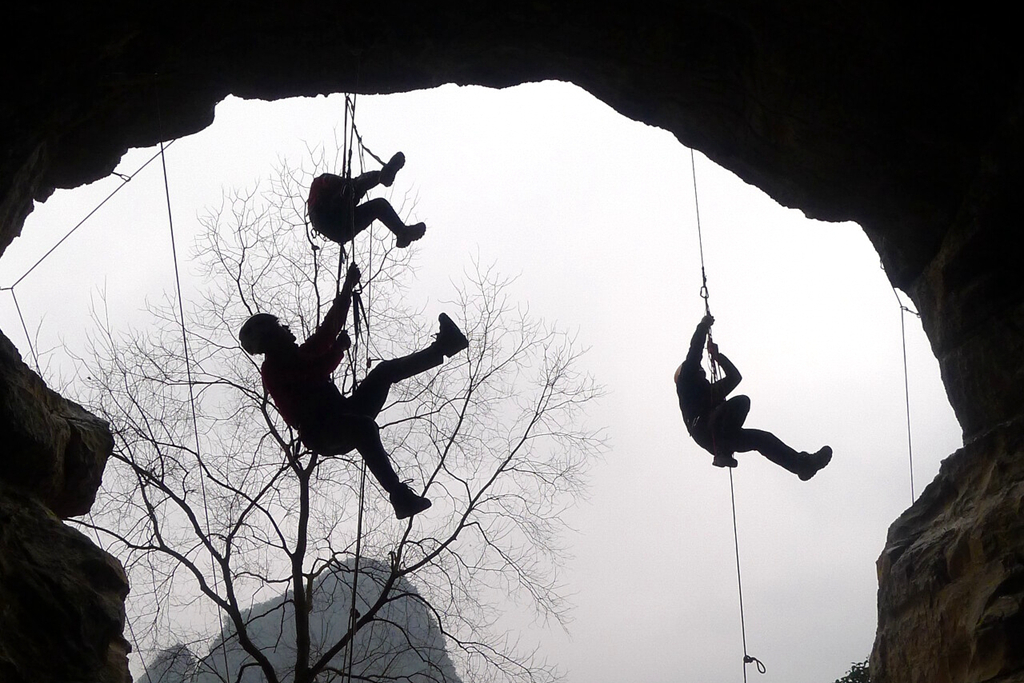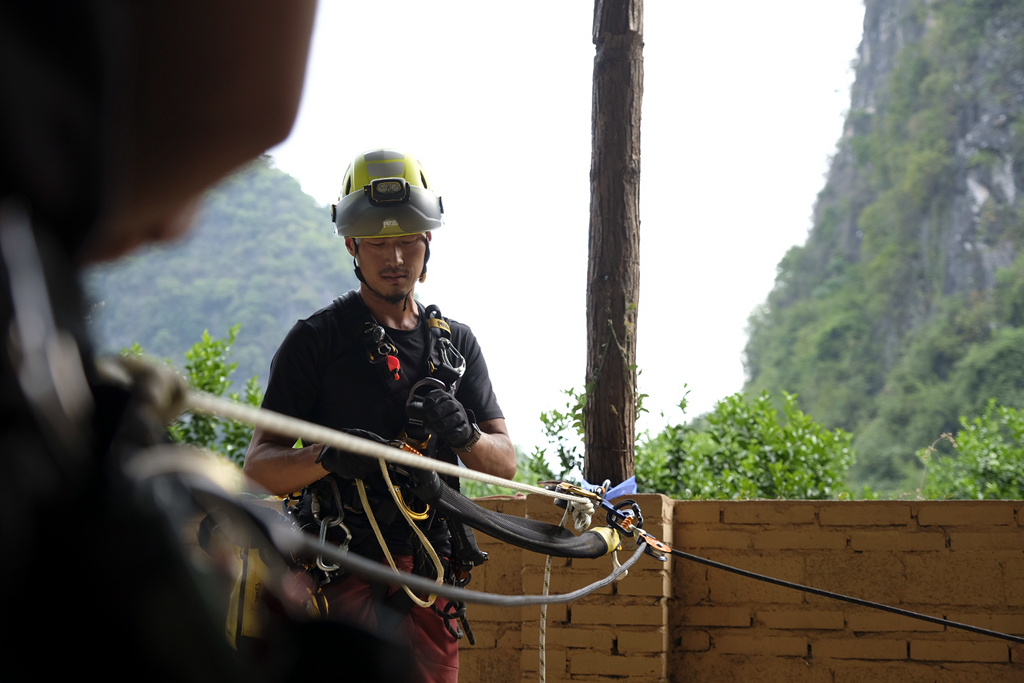Terratribes Articles

HOW TO CLEAN YOUR LIFE SAFETY EQUIPMENT
Edited By CMC; Photos by Terratribes
Safety always Number 1!
CMC is issuing the following updated recommendations on how to clean and decontaminate life safety equipment. We define cleaning as removing dirt, grime, and minor oxidation transfer; while decontaminating is intended to neutralize viruses, bacteria, and other pathogens.
Always refer to department guidelines and regulatory guidance for best practices. Inspect equipment carefully and give strong consideration to replacement. When in doubt, throw it out.
CLEANING
All rope rescue and access equipment should be kept clean and free of dirt and grit to prevent wear that will reduce the strength, effectiveness, and service life. After the equipment has been cleaned, remember to re-label it as necessary and enter the date, cleaning method, and inspection data into a log. CMC recommends the following washing procedures.
Rope
• Rinse off any excess dirt using clean water from a hose.
• Soak the rope for approximately 30 minutes in a tub of warm water and mild detergent that is safe for nylon and polyester (Woolite® or equal). Use the ratio indicated by the product manufacturer.
• Run the rope twice through a rope washer (Bokat or equal) – repeat more times if the rope is exceptionally dirty.
• Rinse and soak the rope for 15 – 20 minutes in a separate tub with clean water and Downy® fabric softener.
• Hang wet ropes in the shade until completely dry.
At the time of manufacture, rope fibers are treated with a lubricant to minimize internal friction. Some of this lubricant is washed out of the rope in the cleaning process. Adding Downy® fabric softener during the rinse cycle helps restore these protective properties.
Webbing
• Wash webbing in a laundry bag in a front-loading washing machine on the gentle cycle using the warm water setting and a mild detergent that is safe for nylon and polyester (Woolite® or equal).
• Hang webbing in a shaded place until completely dry.
Sewn Gear
• D-Rings, buckles, and other hardware tend to damage washing machines.
• Soak this equipment in a tub of warm water and mild detergent (Woolite® or equal).
• Scrub with a stiff bristle brush to remove heavy dirt deposits.
• Rinse with clean water, taking extra care to completely remove detergent.
• Hang sewn gear in a shaded place until completely dry.
Hardware
• Wipe the dirt off the outside surfaces using a clean, non-abrasive cloth.
• If necessary, wash in a solution of warm water and mild detergent (Woolite® or equal).
• Rinse thoroughly with clean water to remove detergent.
• Be sure to remove all dirt from moving parts (We use Q-Tips to clean the MPDs).
• Dry thoroughly. An air hose or hair dryer can help dry hard-to-reach spots.
• After washing and drying, periodically apply a dry or non-sticky lubricant to preserve the life and performance of our hardware (WD40, LPS1, or equal).
• Avoid lubricating designated friction points along the rope path of devices like the MPD and CLUTCH, and wipe off any extra lubricant as it can become a dirt attractant.
Guidance
For more information on washing rope and hardware maintenance, please see NFPA 1858 Standard on Selection, Care, and Maintenance of Life Safety Rope and Equipment for Emergency Services.



